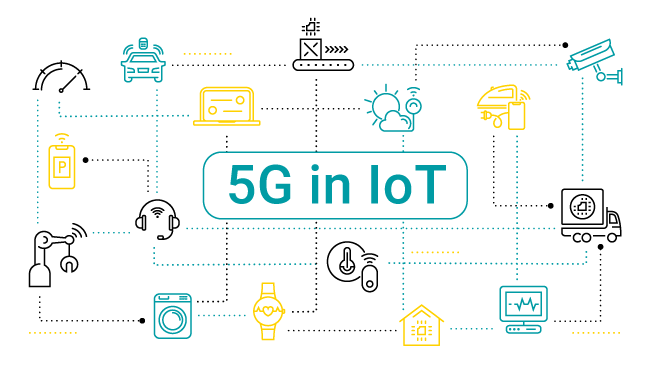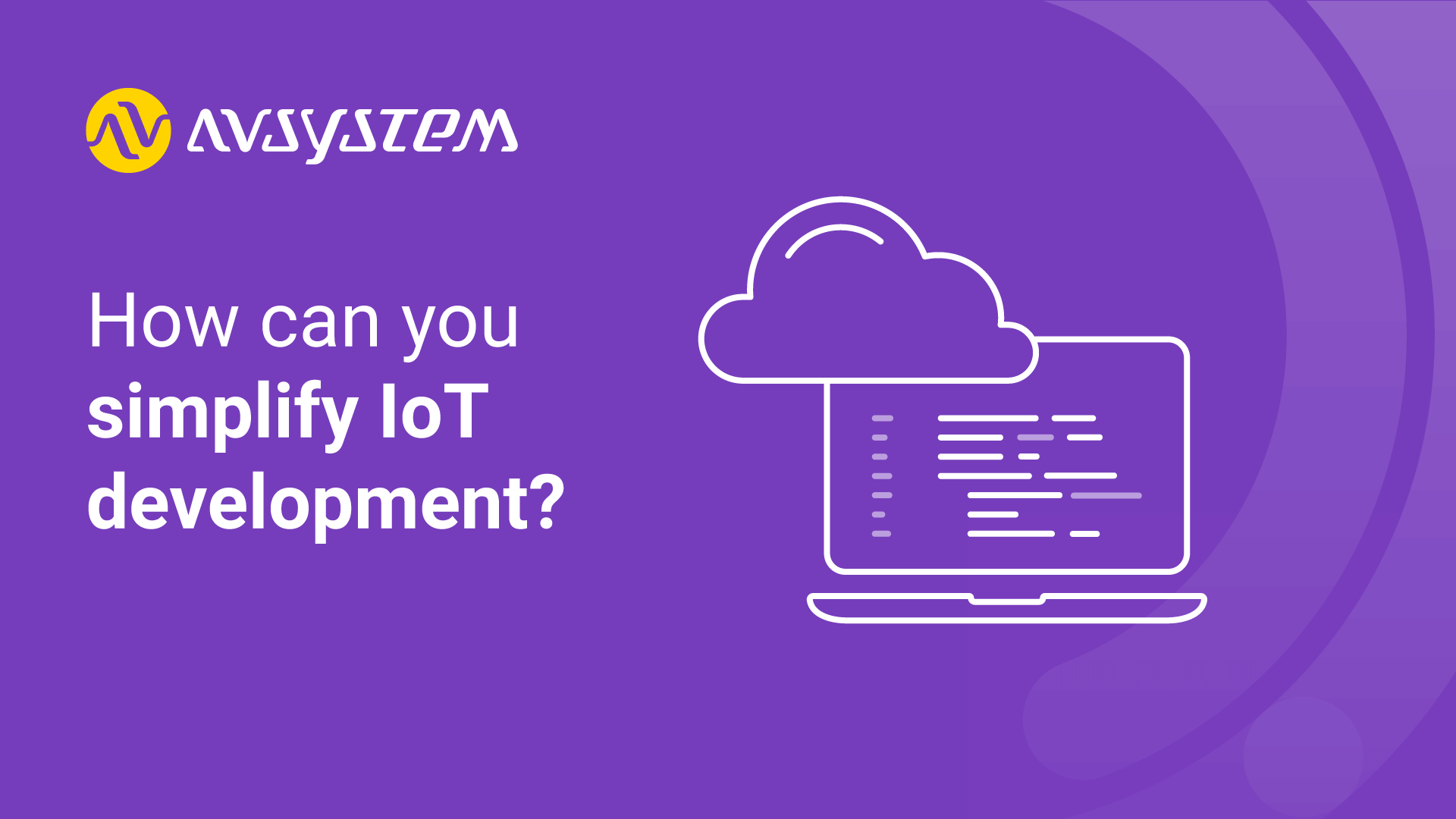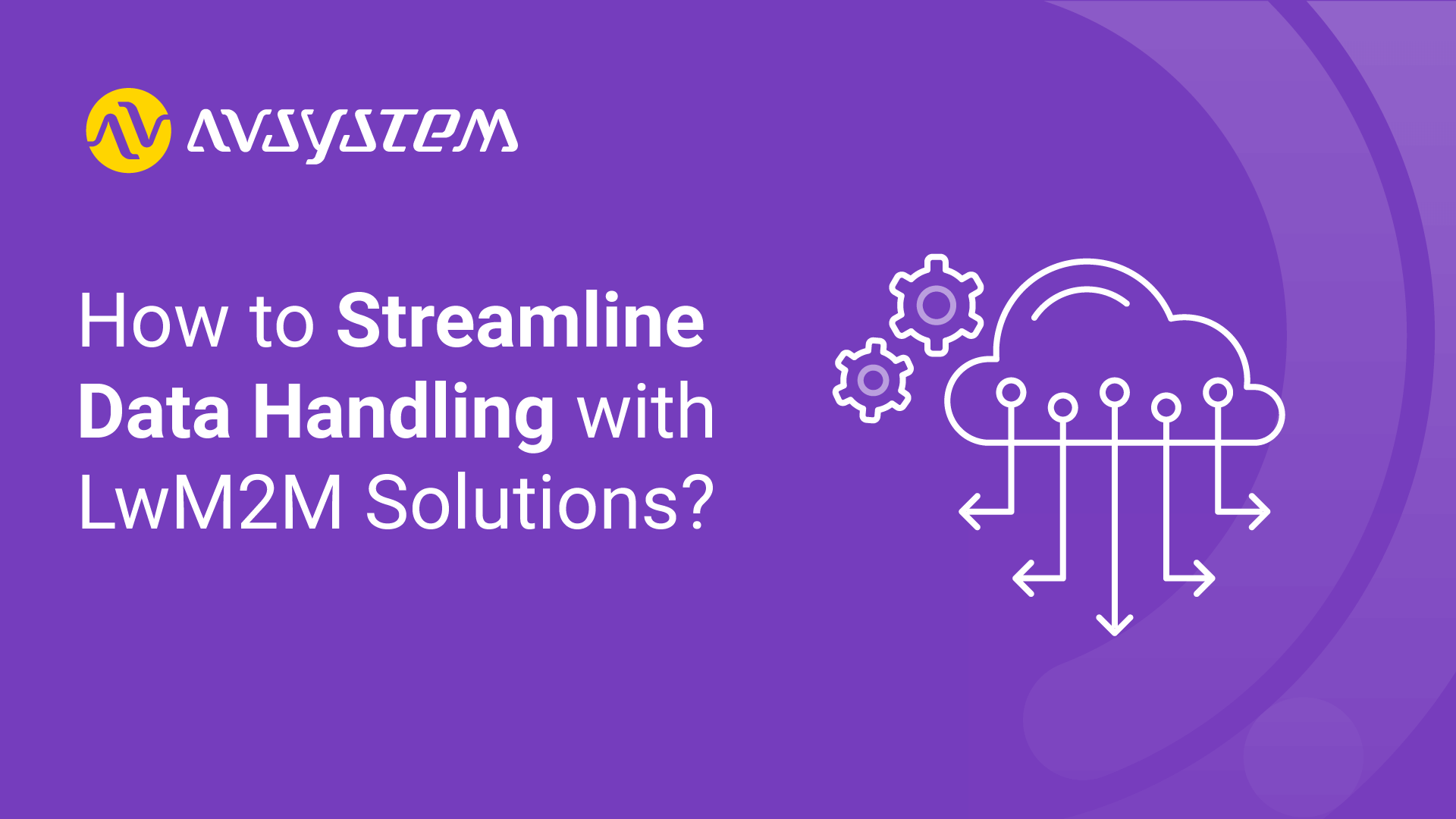5G IoT: What does 5G mean for IoT?

5G is here and it’s here to change the game – or so they say. But what does that really mean for you and can it actually bring any benefits to you or your company? That one we know for sure – yes, it can. 5G IoT is a real catalyst for the development of Industry 4.0 and there is a better chance than not that your industry is already a part of that revolution.
Why is everyone excited about 5G?
To answer that question, let’s start with the essentials: what is 5G? 5G stands for the fifth generation of wireless technology. In simplified terms, the first generation of wireless allowed us to make calls and popularized cell phones, the second made it possible to text, the third brought the Internet to our phones and the fourth let us transfer large amounts of data at much higher speeds (i.e. stream Netflix on our smartphones). The fifth generation is supposed to make a few crucial improvements: reduce latency (i.e. response time) to allow for real-time communication, as well as improve data transfer, especially upstream speeds. On the surface it may seem then like 5G is not about executing new, breakthrough ideas like cellphones once were, but improving existing ones. However, this is not entirely true, as tapping into this incredible potential can bring on a whole world of solutions that seemed unthinkable until now. In fact, the 5G standard itself uses new technologies and improves on the existing ones to deliver unprecedented data transfer.

Millimeter waves (mmWave)
Millimeter waves – i.e. radio frequencies between 30 and 300 GHz – are obviously nothing new. In fact, the first research into them dates back to the twilight of the 19th century! They have a number of different applications, however until now they weren’t much used in telecommunications, even though they promise incomparably better transfer speeds. This is because they have relatively short range caused by high attenuation, that is their tendency to lose strength as they are absorbed by the air or humidity.
There is a negative correlation between the frequency and its range (the higher the frequency, the shorter the range). This is why when speaking of 5G, we distinguish between low (600-850 MHz), mid (2.5-3.7 GHz), and high (25-39 GHz) band spectrum, as each possesses different features. Higher bands clearly offer better speeds, but at a cost of shorter range.
Small cells
To make up for the limited range, 5G technologies require so-called small cells. Their “smallness” is relative to the size of the cell towers that we are used to now. As they have respectively smaller range, the idea is to create a dense network of these cells to provide appropriate coverage with supporting femtocells ensuring coverage indoors (at home or in small offices).

This may seem like a both cost- and labor-intensive idea. Indeed, it has its drawbacks, however a bigger number of cells comes with its benefits, too. Every device in a cell (whether it be a micro- or a macro-cell) communicates with the antenna on a dedicated channel. Therefore, considering that the number of channels available is limited, deploying smaller cells with shorter range pays off in an increased number of channels available. This way smaller cells can accommodate more devices.
Beamforming
On top of that, 5G cells use a signal processing technique called beamforming. This allows them to direct the waves towards a particular device by using signal from multiple antennas.
Normally, the signal spreads in all directions. But if several antennas in close proximity broadcast the same signal at a similar time, this causes interference. For some waves that interference will be constructive (i.e. it will carry the signal further) and for some – destructive (it will weaken it). This way, you can create a directed “beam,” rather than an indiscriminate “donut” of signal.

Beamforming isn’t an entirely new concept and is even now used in some enterprise-grade WiFi devices to strengthen the signal. And while improved signal quality is definitely a nice perk, for 5G, beamforming is the be-all and end-all. As we’ve already explained, the frequencies used in 5G networks are much more susceptible to interference and can’t really pass through obstacles such as walls all that well. Therefore, the ability to direct the signal becomes a crucial factor for 5G technologies.
Massive MIMO
Related to beamforming is another technology: massive MIMO (multiple input, multiple output). MIMO in general makes it possible to transmit and receive more data streams at once. Massive MIMO makes it possible to do that with even more antennas than before.
Until now, devices would normally be handled on a first come – first served basis. That means, every device had to wait its turn. Now, with this technology, multiple devices can be served at once. Because massive MIMO allows for hundreds of antennas to be used, the number of devices served simultaneously also grows.

Network slicing
The final piece in this technological puzzle is network slicing. It is a type of network architecture that makes it possible to create completely independent, virtual “slices” within the physical network, each of which caters to particular needs.
This is especially important in the context of the Internet of Things. All IoT projects are understandably network-intensive overall. However, not all elements of the project have the same network requirements, especially since IoT projects tend to be very broad and diverse, encompassing a lot of different devices and applications. With network slicing, it is possible to “customize” network parameters for different applications, to allot resources more effectively. For example, essential operations will have more steep service level requirements and always take priority, even in critical conditions.
You also might be interested in:
A world of opportunities
The reason why 5G is considered to be such a breakthrough is because a lot of experts see it as the key enabler for the development of an exciting new world of the Internet of Things, as opposed to mere machine-to-machine communications (what is the difference between the IoT and M2M, you ask?). So far, the IoT technology has been limited by the capacities of 4G networks, for example by how many devices it can handle. With all the smartphones and smartwatches, smart homes, smart cars, smart factories and even smart forks, 4G is fast approaching that capacity. 5G on the other hand can support up to a million devices per square kilometer – ten times more than 4G.

As was said, 5G can not only handle more devices, it can handle them better. The standard that was set by the International Telecommunications Union – Radiocommunication sector (ITU-R) for 4G technologies (IMT-Advanced) had the peak data rate at 1 gigabit per second. For IMT-2020, i.e. 5G technologies, the bar was raised to 20 Gbps. Granted, “peak” is far from “average,” but it goes to show how much potential 5G has and we can already see some spectacular speeds in networks that have been set up so far. Nobody needs convincing that faster and more capacious networks are better, but for the Internet of Things these are crucial factors. The sheer number of connected devices is ever growing and as each of these becomes more sophisticated, it collects and dispatches more and more information, amassing to a monumental volume of data. How fast all these devices can communicate determines how useful they actually become.
This is why 5G has one more superior advantage and that is latency, i.e. the response delay. Again, the “golden standard” for 4G is 10 milliseconds, for 5G – as little as 1 ms. That doesn’t seem like that much of a difference, especially considering that a literal “blink of an eye” takes upwards of 300 ms. But for 5G IoT it actually might be a difference between life and death, if you consider its application in autonomous cars that need to make split (milli)second decisions in emergency situations or robot-assisted surgeries that demand perfect precision.
5G technology was designed with that in mind. Whereas 4G was developed mainly for the benefit of smartphones, 5G is supposed to be the “vascular system” behind the IoT connectivity. The three main usage scenarios for 5G, as defined by ITU-R, are ultra-reliable low latency communications (URLLC), enhanced mobile broadband (eMBB), and massive machine-type communications (mMTC).

URLLC is perhaps the most momentous promise of 5G IoT, considering what it will allow us to do.It is a set of features that ensures the network will both have low latency and be ultra-reliable at the same time. This has applications in the life-or-death situations we’ve already discussed, such as performing remote surgeries with the assistance of robots or driving autonomous vehicles. In both these scenarios, any network failure or lags would have catastrophic consequences. But URLLC is no less important in mission critical operations, whatever they may be for a given industry: managing electric power grids, first responder communication systems, or even online banking systems. All these will increasingly rely on 5G IoT and therefore need it to provide air-tight network conditions.

EMBB is a promise of handling massive amounts of data across large areas with low latency. The most commonly discussed applications for this are perhaps not as monumental as for URLLC, but they are probably the most appealing 5G IoT scenarios to the public. EMBB is supposed to ensure perfect coverage in densely populated public spaces (for example at stadiums during sporting events), as well as fully immersive VR. The latter one can put a heavy strain on the network, as it requires very high resolutions (because the image is much closer to the eye) and streams double the volume (separately to each lens). But eMBB will have business applications, too, allowing for high-speed data transfer (including data upload) in smart offices, during virtual meetings, or real-time long-distance interpreting, always ensuring high quality of experience.

Last but not least, mMTC ensures that devices connected to the 5G IoT network can have both low power and data consumption. This is particularly important for all things “smart” that are connected into giant networks: smart cities, smart factories, etc. There, just because of the sheer scope, if devices consumed a lot of power and a lot of data, everything would fall into pieces in a matter of moments. Imagine the energy bill for a factory where there are millions of interconnected sensors that run an automated production line, if they weren’t power efficient! And now imagine the data transfer if they weren’t data efficient, too!
Mind-boggling technology
5G is an incredibly complex technology with a lot of hurdles on its way – both for engineers, providers, and users. Just as it requires the providers to deploy a costly new infrastructure, it also requires customers to purchase and implement new devices that are 5G-ready. For the client to make full use of the potential that 5G has, both the network and the devices need to be set up properly – solutions like network slicing need thoughtful implementation based on business needs but also expert IT knowledge. As the technology gets more sophisticated and specialized, it also becomes increasingly difficult and resource-intensive to manage all the devices in your network, considering their proliferation in the era of the Internet of Things. Therefore it rarely makes business sense for a company to manage all of this on its own. In order to truly tap into the potential of the IoT, companies need to consider handing the technology reins to specialists and sourcing help with IoT device management services. Solution providers can take expert care of provisioning, management and maintenance of these devices, ensuring availability and security, for example by choosing the right 5G-ready protocols, such as LwM2M, while your company focuses on its core operations.
While 5G isn’t really here fully and you may think it’s not worth the candle yet, it is fast approaching and it will truly change the game. It is the fuel that the Internet of Things needs to steam ahead and with the growth of the IoT come unprecedented benefits: data that allows for more informed decision making; precision that creates better product quality; reliability that reduces downtime. Whoever fails to show up at the starting line now may never be able to gain on the competition in the future.
Recommended posts
- How can you effectively tackle the challenges of IoT development?
- IoT communication protocols explained [with measurements for NB-IoT]
- How to Streamline Data Handling with LwM2M Solutions?
Subscribe to stay in the loop with all our latest content:
Recommended posts


![IoT communication protocols [with measurements for NB-IoT]](/media/avssite/news/Communication-Protocols-Comparison_cover_new.png)
